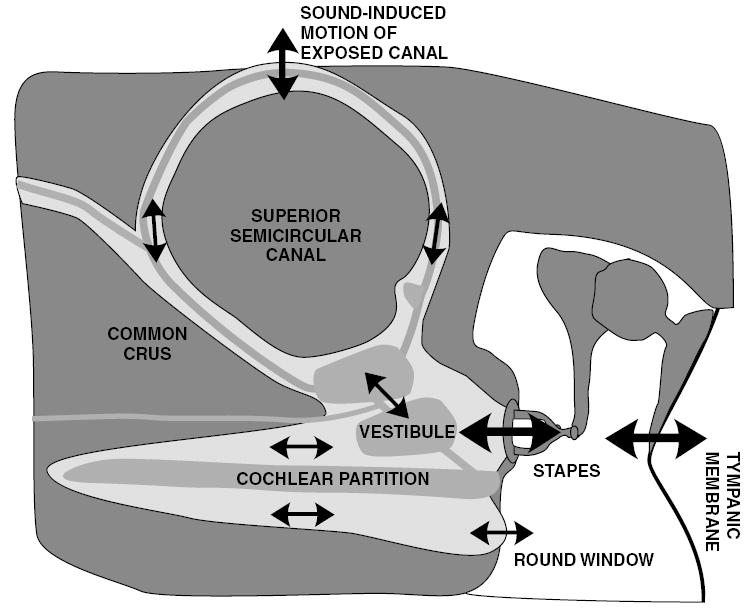Fig. 8.

The hypothetical response of inner ear fluid motion to air-conducted sound in an ear with a dehiscent canal. The solid black arrows show the proposed directions of motion, where arrow size is proportional to magnitude of motion. The endolymph (grey), perilymph (light grey), and bony capsule (dark grey) are illustrated, along with a dehiscence at the apex of the superior semicircular canal. Air-conducted sound causes a stapes volume velocity, which is partially shunted through the superior semicircular canal when there is a dehiscence. This shunting leads to a decrease in the stimulus to the cochlea and diminishes the round window velocity (adapted from Rosowski et al., 2004).
